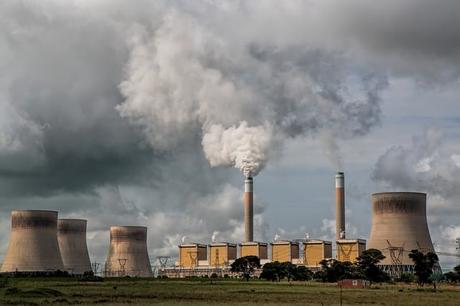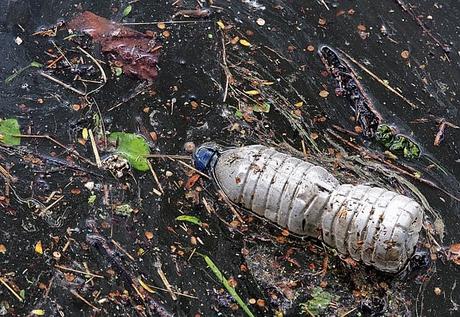Environmental pollution is the introduction of harmful materials caused by pollutants into the environment. Pollutants are the various impurities that have found their way into the environment due to both human activity and natural causes thus leading to pollution. These chemical compounds are harmful to both life and the environment. The WordWeb dictionary defines pollutants as “waste matter that contaminates the water, air or soil.”
According to environmentalists and scientists, there are various types of pollutants, and are classified according to the type of pollution they cause – such as water, air, soil, noise and radioactive pollution. Others types include thermal, plastic, agricultural, and light pollution. In view of all these, this article seeks to list and explain the various types of pollutants present in the environment.

1. Chlorofluorocarbons (CFC)
These are gases that are very destructive to the protective ozone layer. CFCs are used in sprays, perfumes and other canned products including aerosols. Since they are lighter than air, they rise to the atmosphere where the ultraviolet light frees the chlorine.
If the chlorine gets in contact with the earth’s protective ozone layer, it causes irreparable damage which leads to entry of cosmic rays that are carcinogenic to human beings and the deterioration of marine and terrestrial plant growth.
2. Lead
This is a dangerous toxin found across the world, in fact, in all states. The element readily dissolves in water and upon uptake leads to devastating health problems. It negates the work of body’s enzymes thereby slowing down the normal functioning of the body. In addition to this, it is one of the causes of nervous breakdowns, for in large quantities, it ends up affecting the brain.
3. Methane
This is a major component of natural gas, the gaseous form of fossil fuel. In itself it is harmless to the environment. However, it is one of the greenhouse gases and when it reacts with carbon dioxide in the presence of water vapor, it absorbs and retains most of the radiation heat from the sun. This traps excessive heat in the atmosphere contributing to global warming and climate change.
4. Carbon monoxide
This is one of the most lethal pollutants of the air. It is produced in various instances like cigarette smoking and whenever there is incomplete combustion. For vehicles to run, for example, the fuel in them has to undergo combustion to move the pistons that power the engine. The same applies to various machinery fuel powered equipment in industries.
But since the space within the engine is compacted and at times do not allow in enough oxygen for complete combustion, the fuels composed of a high hydrocarbon concentrations do not fully combust, releasing carbon monoxide as a byproduct.
Carbon monoxide clogs the air making it hard to breathe. It is also one of the leading causes of deaths associated with suffocation in homes where firewood is used in enclosed spaces. Carbon monoxide also plays a huge role in the formation of ground-level ozone.
5. Particulate matter (PM)
These are the very small particles suspended in the air. They can either be in solid form or in liquid form in both organ and inorganic particles. They are released into the atmosphere due to incomplete combustion like the carbon particles or blown into the air by wind. Examples are pollen, dust, soot, and aerosol spray liquid droplets just to mention a few.
They are very tiny and can, therefore, be easily inhaled. They cause respiratory problems such as lung cancer and are even more harmful to sensitive people especially those who suffer from asthma attacks.
6. Nitrogen oxides
There are many types of nitrogen oxides, most of which are harmful to the environment. These include; nitric oxide, nitrogen dioxide, nitrogen monoxide, and nitrogen pentoxide. The formation of these oxides happens in the atmosphere where nitrogen readily combines with oxygen at high temperatures.
Nitrogen dioxide has an irritating odor that also contaminates the air. Like sulfur dioxide, nitrogen dioxide combines with oxygen and water to form acid rain in the form of nitric acid thus leading to premature death, health complications, and corrosion of roofs.
7. Sulfur dioxide
This is the main ingredient of acid rain, which results in the corrosion of roofs and various health complications. The acid rain, weak sulfuric acid, is formed when there is oxidation of this compound. The process takes place when sulfur dioxide reacts with oxygen and other chemical oxides, and together with the water rain, it becomes acid rain.

8. Plastic
This is one of the most common environmental pollutants and bears one of the greatest impacts. The abundance of plastics in the world even led to the coining of the term “plastic pollution.” Plastic is used almost everywhere; to hold and package things such as foods, drinks, chemicals, and is also used as a raw materials for making various products. More than 60% of all products are made using plastic.
To make matters worse, almost all single use items are made of plastics, which end up being thrown away after use. These plastics end up filling landfills, waterways, oceans, rivers and streams thus contaminating drinking water and water for domestic use. These same plastics find way into game parks and marine habitats harming wildlife and marine animals that confuse them for food.
9. Mercury
This element is released into the environment due to mining activities, poor disposal of certain items that are either made of mercury or had mercury in them. Batteries are a main source of mercury, which is why it is essential to dispose of them carefully. Mercury should be handled with care since it can readily change its state. This makes the element hard to detect and thus, hazardous. Inhalation of mercury can cause death.
10. Ground level ozone
This is one of the constituents of the well-known ozone, but the difference is that it forms just above the earth’s surface. It is a highly irritating and colorless gas produced when there is a photochemical reaction between volatile organic compounds (VOCs) and nitrogen oxides in sunlight’s presence.
Hence, it is referred to as secondary pollutant. Exposure to ozone is associated with pre-mature death, asthma, and respiratory problems in humans. It also decreases the yield of some crops and can destroy synthetic, textile, and cotton materials, and accelerates the corrosion of some coating/paints.
11. Bad smells
Odors are an irritation to human life and animals, and lead to the pollution of the environment.
12. Nitrates
Nitrates are a complex form of nitrogen and oxygen elements. The compound is associated with nitrate pollution, which causes water contamination from excessive amounts of nitrates washed out from food and animal waste as well as inorganic fertilizers. Once in excessive concentration in water bodies, it causes eutrophication – a contributing factor to the contamination of waterways and death of aquatic life.
13. Phosphorus
Like nitrates, phosphorus is associate with nutrient pollution that lead to eutrophication and harmful algal bloom.
14. Automobiles
Motor vehicles are also pollutants considering the multiple pollutants they release into the environment. Without automobiles, some pollutants such as soot, nitrogen oxides, and hydrocarbons can be considerably cut back from the environment. But due to the use of fossil fuels in automobiles, there will always be the continuous release of carbon compounds and particulate matter into the atmosphere leading to air pollution. The hooting, alarms, and high rev sounds are also noise pollutants.
15. Loud sounds
Loud sound is a pollutant because it contributes to noise or sound pollution. The sources of the pollutant include vehicles, planes, clubs, and loud speaker radio systems. The music that is played in clubs is so loud that concentration is impossible a distance away from the place. Loud sounds cause temporal or permanent hearing impairments, and can also interfere with both the behaviors of humans and animals such as sleep, mating, movement and breeding.
16. Uranium
This metal is associated with radioactive pollution because it is highly radioactive. Exposure for humans can cause various cancers, premature aging, premature death, fertility problems, and interfere with the normal brain functions.
17. Volatile organic compounds (VOCs)
These are compounds that can easily become gas or vapor. They are mostly released from the burning of gasoline, wood, natural gas and coal. Other sources of VOCs include thinners and paints, cigarettes, solvents, wood preservatives, air fresheners, furnishings, copy machines and printers, cleaners, pesticides, and disinfectants. VOCs react with nitrogen oxides in the atmosphere to form ground level ozone and smog.
18. PCBs (polychlorinated biphenyl)
This is an organic chlorine compound that was at one point extensively used as coolant fluids and dielectric in electrical gadgets, in heat transfer fluids, and in carbonless copy paper. It was banned in the US in 1979, but is still in use. PCBs are very dangerous pollutants since the chemicals are cancer causing and can adversely affect the life of fish and wild animals.

